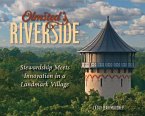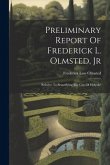Point Chautauqua was designed by renowned landscape architect Frederick Law Olmsted in 1875 on a wooded hillside rising steeply from the shores of Lake Chautauqua. The only religious community designed by Olmsted, over the years it evolved into a hotel resort and then a lakeside residential community. Point Chautauqua was listed on the National Register of Historic Places in 1996 and is now considered one of the masterpieces of America's greatest landscape architect. Despite being in continuous use for nearly 150 years, Point Chautauqua continues to exhibit the design principles that are hallmarks of Olmsted creations. It also poses a striking contrast to the more famous Chautauqua Institution across the lake. Olmsted criticized the prosaic grid pattern of streets which he felt denied Institution residents a sense of connection with its lakeside site and found the crowding of buildings at the Institution to be unhealthy. Taking a very different approach, Olmsted laid out Point Chautauqua with curving streets that follow the landscape and allow residents to enjoy views of the lake and lake breezes. Like his earlier designs for Riverside near Chicago, Parkside in Buffalo, and Tacoma, Washington, Point Chautauqua anticipated the layout of many twentieth-century suburban residential communities. This priceless artifact is also a living, working community of people, making it a rewarding laboratory for students of historic landscape architecture as well as for those who seek the preservation of such communities.
Bitte wählen Sie Ihr Anliegen aus.
Rechnungen
Retourenschein anfordern
Bestellstatus
Storno








